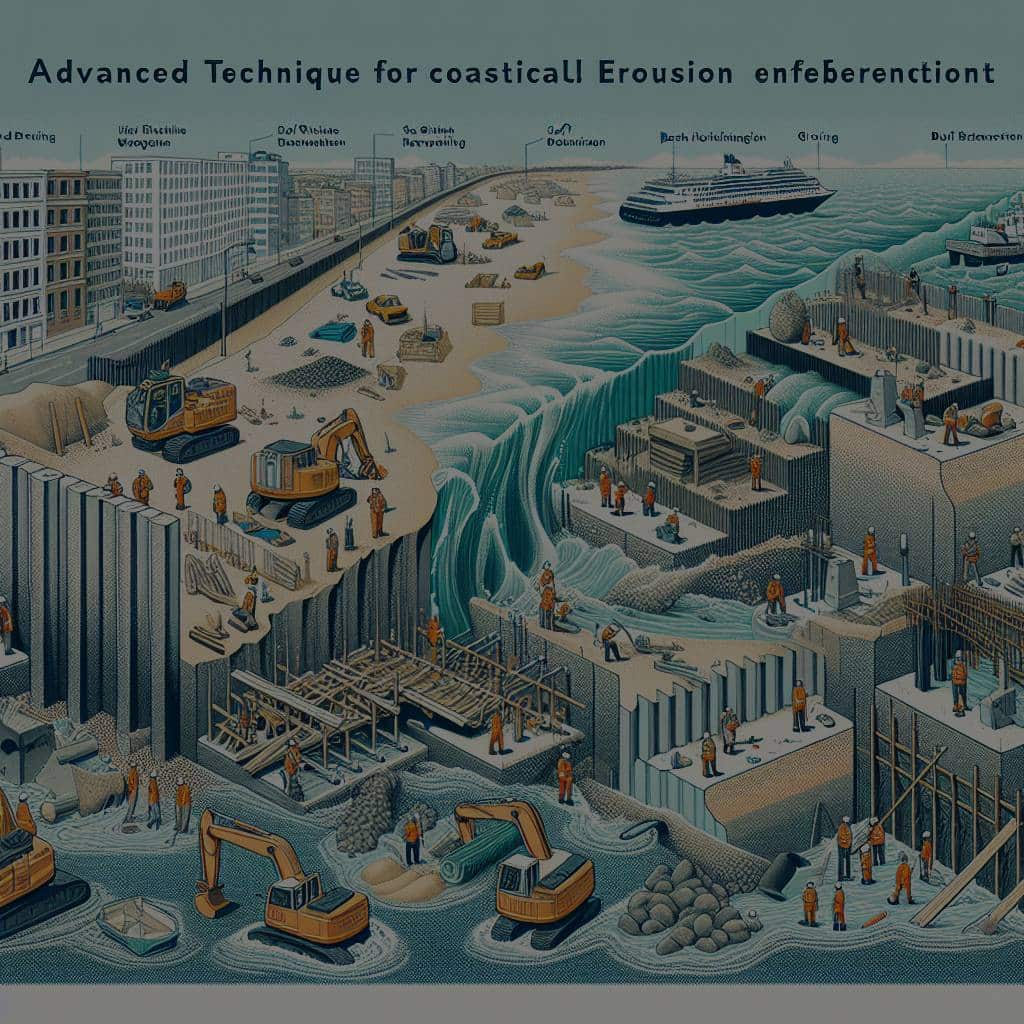What Advanced Techniques Can Be Used to Reinforce Coastal Properties Against Erosion?

Coastal erosion is a significant issue for many homeowners and municipalities across the nation. The constant battle against the forces of water and wave can lead to substantial damage to coastal properties and shorelines. Understanding the methods available to reinforce these areas can be invaluable in protecting shorelines and reducing the cost associated with erosion.
Seawalls for Shore Protection
Seawalls are often seen as the first line of defense in controlling shoreline erosion. These robust structures are designed to withstand the constant pressure from waves and tides, acting as a barrier between the ocean and the land. A well-designed seawall can prevent sand and soil from being washed away, thereby maintaining the integrity of the beach and protecting properties from erosion.
Topic to read : How to Analyze and Invest in the UK’s Post-Brexit Property Market?
Designing and implementing a seawall is no small feat. It requires careful planning and consideration of the specific needs of the area. Factors such as wave height, tidal patterns, and the composition of the coastline all play a role in determining the design and placement of the seawall.
However, while seawalls can be effective, they are not without their drawbacks. The construction of a seawall can be disruptive to the natural environment and wildlife. Moreover, the cost of building and maintaining a seawall can be significant, making it a less feasible option for some communities.
Topic to read : How to Implement a Green Roof Initiative for Urban Real Estate Developments?
Beach Nourishment as a Natural Approach
Beach nourishment is a natural method used to combat coastal erosion. This process involves the addition of large quantities of sand to the beach, in an effort to replace what has been lost due to erosion. The idea is simple: by increasing the amount of sand on the beach, the buffer against waves is enhanced, reducing the rate of erosion.
This method is popular for its lower ecological impact compared to seawalls. Beach nourishment allows for the preservation of the natural landscape and is less disruptive to local wildlife. It also has the added benefit of improving the aesthetic appeal of the area, which can be a major draw for tourism.
Still, beach nourishment is not a one-time solution. This technique requires ongoing maintenance to replace the sand that is continually lost to erosion. The cost and logistics of sourcing and transporting the necessary volume of sand can be substantial. Moreover, it is important to carefully consider the source of the sand to avoid any potential environmental impact.
Use of Breakwaters and Groynes
Breakwaters and groynes are another set of tools in the arsenal against coastal erosion. Breakwaters are structures built offshore to reduce the force of waves reaching the shore. They can be constructed from a variety of materials, including rocks, concrete, or even sunken ships. By reducing wave energy, breakwaters can help to slow the rate of erosion.
On the other hand, groynes are structures extending from the beach into the sea. They are designed to interrupt the natural alongshore movement of sand, trapping it on the beach and thereby reducing erosion.
Both breakwaters and groynes can be valuable assets in protecting shorelines. However, their use must be carefully managed to avoid negative impacts. Misplaced or poorly designed structures can actually increase erosion in certain areas while protecting others. Additionally, these structures can be expensive to construct and maintain.
Using Vegetation to Control Erosion
Vegetation is a natural and environmentally friendly method of erosion control. Plant roots help to bind the soil together, making it more resilient against the erosive forces of waves and water. This method is often used in conjunction with other techniques for the best outcome.
There is a wide variety of plants suitable for this purpose, ranging from grasses and shrubs to trees. The choice of species will depend on the specific conditions of the area, including soil type, climate, and the level of exposure to waves and tides.
The use of vegetation for erosion control has the added benefit of providing habitat for wildlife and enhancing the natural beauty of the area. However, it can take time for the plants to establish and become effective, and some maintenance may be required.
Innovative Coastal Protection Methods
In recent years, a number of innovative methods have been developed to address coastal erosion. These include the use of permeable structures, artificial reefs, and eco-engineering solutions.
Permeable structures allow water to pass through, reducing wave energy without disturbing the natural sand movement. Artificial reefs mimic the role of natural reefs in breaking up wave energy and providing a habitat for marine life. Eco-engineering solutions combine traditional engineering techniques with natural systems to create a sustainable approach to coastal protection.
While these techniques show promise, they are still relatively new and require further research and testing to assess their long-term effectiveness and environmental impact. However, the drive towards more sustainable and eco-friendly solutions is a positive step in the ongoing battle against coastal erosion.
In summary, there’s no one-size-fits-all solution to protecting coastal properties against erosion. Multiple methods are available, each with its strengths and weaknesses. The most effective approach often involves a combination of techniques, tailored to the specific needs of the area.
Living Shorelines and Managed Retreat: Adapting to Change
Living shorelines have emerged as a popular nature-based solution for erosion control. These involve the use of natural habitat elements, such as marshes, wetlands, and seagrass, to protect against erosion and enhance the ecosystem. The idea behind living shorelines is to work with nature, rather than against it, to mitigate the damaging effects of wave energy. The natural elements absorb and distribute the energy of the waves, reducing their impact on the shoreline.
Living shorelines offer several benefits. They provide habitat for wildlife, promote biodiversity, and improve water quality. They also have the potential to sequester carbon, helping to combat the effects of climate change. However, they do require a longer period to establish and may not be suitable for all coastal areas, particularly those exposed to high wave energy.
Managed retreat is another approach surfacing within coastal management discussions. Here, instead of trying to hold the line against the sea, the focus is on moving people and infrastructure away from the vulnerable coastal areas. This method acknowledges the long term influence of climate change on coastal communities, accepting sea-level rise and increased storm frequency as realities.
While the concept may seem extreme, it is seen as a necessary adaptation strategy in some areas. Managed retreat is a complex and controversial solution, requiring careful planning and community cooperation. The costs associated with relocating buildings, infrastructure, and people can be significant. However, in places where repeated attempts at shore protection have failed, it may be the most viable option.
Conclusion: Balancing Protection and Sustainability
The fight against coastal erosion presents a complex challenge, with each method having its own set of advantages and drawbacks. Traditional methods like seawalls and beach nourishment can provide immediate relief, but they often come with high financial and environmental costs. Nature-based approaches such as vegetation control and living shorelines offer more sustainable alternatives, but may not be suitable in all contexts. Innovative solutions like artificial reefs and permeable structures are promising, but require further research and development.
The concept of managed retreat forces us to reconsider our relationship with the coast, recognizing that in some cases, the best strategy might be to step back. This approach, although controversial, highlights the need for long term thinking in coastal management.
In the end, effective coastal protection against erosion requires a multi-faceted, adaptable approach. It should consider the specific characteristics of each coastal area, the needs and values of local communities, as well as the impacts of climate change.
The goal should not only be to protect properties and infrastructure but also to preserve the ecological integrity of our coasts. After all, it is the very beauty and vitality of these areas that make them worth protecting. So, in our quest to combat erosion, we must strive to strike a balance between protection and sustainability, ensuring that our coasts continue to thrive for generations to come.
